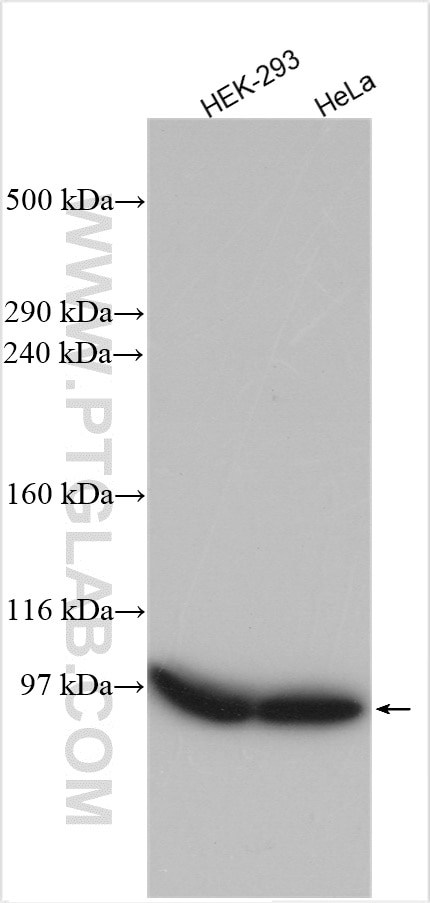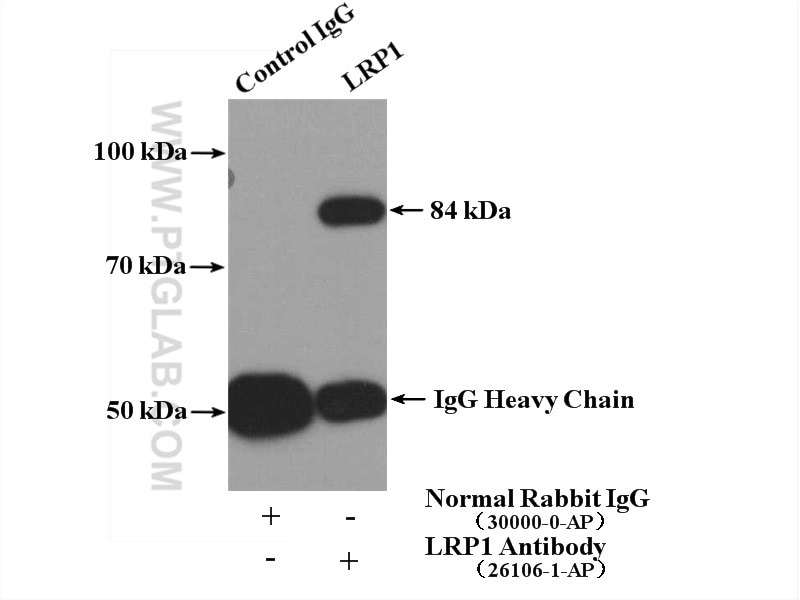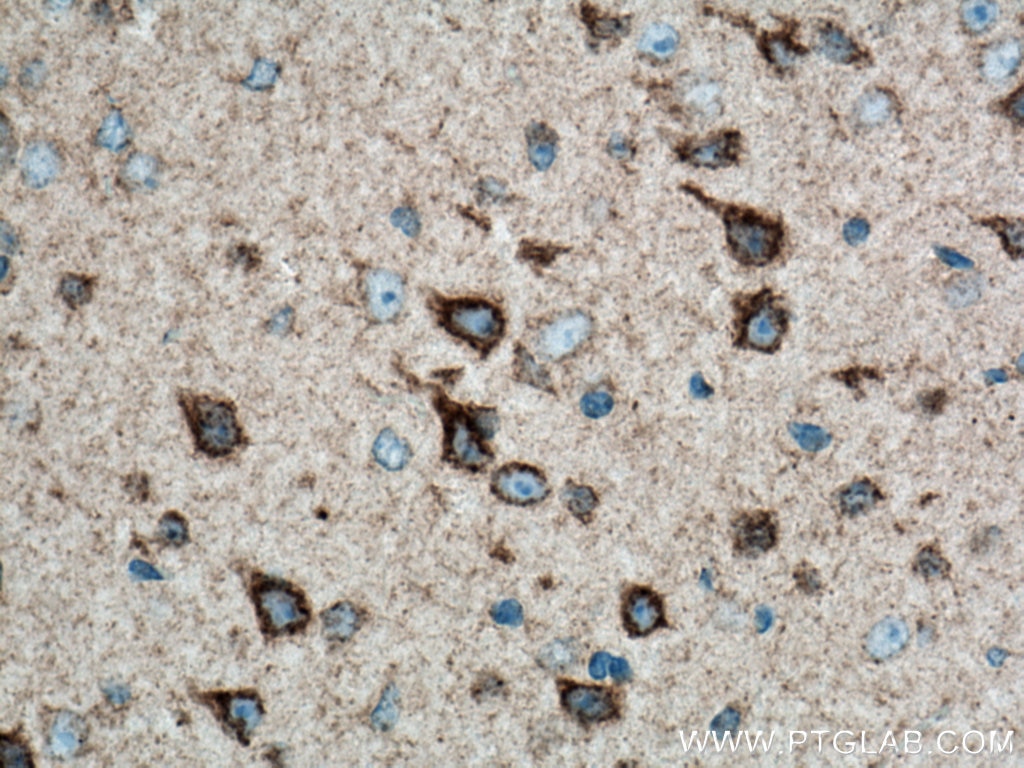Anticorps Polyclonal de lapin anti-LRP1
LRP1 Polyclonal Antibody for WB, IHC, IP, ELISA
Hôte / Isotype
Lapin / IgG
Réactivité testée
Humain, souris
Applications
WB, IHC, IP, ELISA
Conjugaison
Non conjugué
N° de cat : 26106-1-PBS
Synonymes
Galerie de données de validation
Informations sur le produit
26106-1-PBS cible LRP1 dans les applications de WB, IHC, IP, ELISA et montre une réactivité avec des échantillons Humain, souris
| Réactivité | Humain, souris |
| Hôte / Isotype | Lapin / IgG |
| Clonalité | Polyclonal |
| Type | Anticorps |
| Immunogène | LRP1 Protéine recombinante Ag23098 |
| Nom complet | low density lipoprotein-related protein 1 (alpha-2-macroglobulin receptor) |
| Masse moléculaire calculée | 505 kDa |
| Poids moléculaire observé | 85-90 kDa |
| Numéro d’acquisition GenBank | BC045107 |
| Symbole du gène | LRP1 |
| Identification du gène (NCBI) | 4035 |
| Conjugaison | Non conjugué |
| Forme | Liquide |
| Méthode de purification | Purification par affinité contre l'antigène |
| Tampon de stockage | PBS only |
| Conditions de stockage | Store at -80°C. 20ul contiennent 0,1% de BSA. |
Informations générales
LRP1 (Prolow-density lipoprotein receptor-related protein 1), also known as A2MR, is a multifunctional cell surface receptor that interacts through its cytoplasmic tail with adaptor and scaffold proteins that participate in cellular signaling. It is synthesized in the endoplasmic reticulum as a transmembrane glycosylated precursor that migrates with an apparent molecular mass of about 600 kd on SDS-polyacrylamide gels. After it reaches the Golgi complex, the protein is cleaved to generate two subunits with apparent molecular masses of approximately 515 and 85 kd respectively (PMID: 2112085). It involved in cellular lipid homeostasis. Involved in the plasma clearance of chylomicron remnants and activated LRPAP1 (alpha 2-macroglobulin), as well as the local metabolism of complexes between plasminogen activators and their endogenous inhibitors. Acts as an LRPAP1 alpha-2-macroglobulin receptor. May modulate cellular events, such as APP metabolism, kinase-dependent intracellular signaling, neuronal calcium signaling as well as neurotransmission (PMID:12888553).







